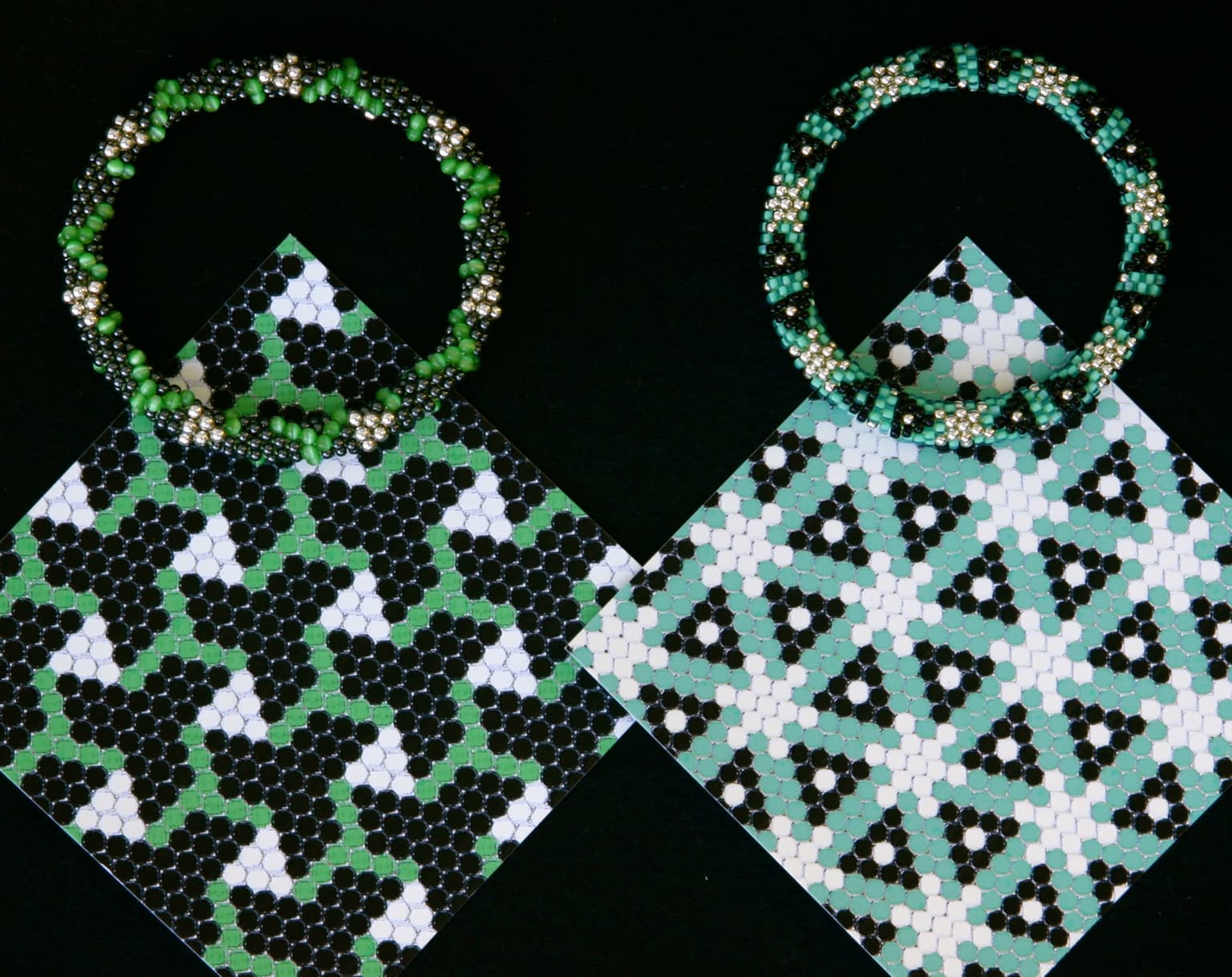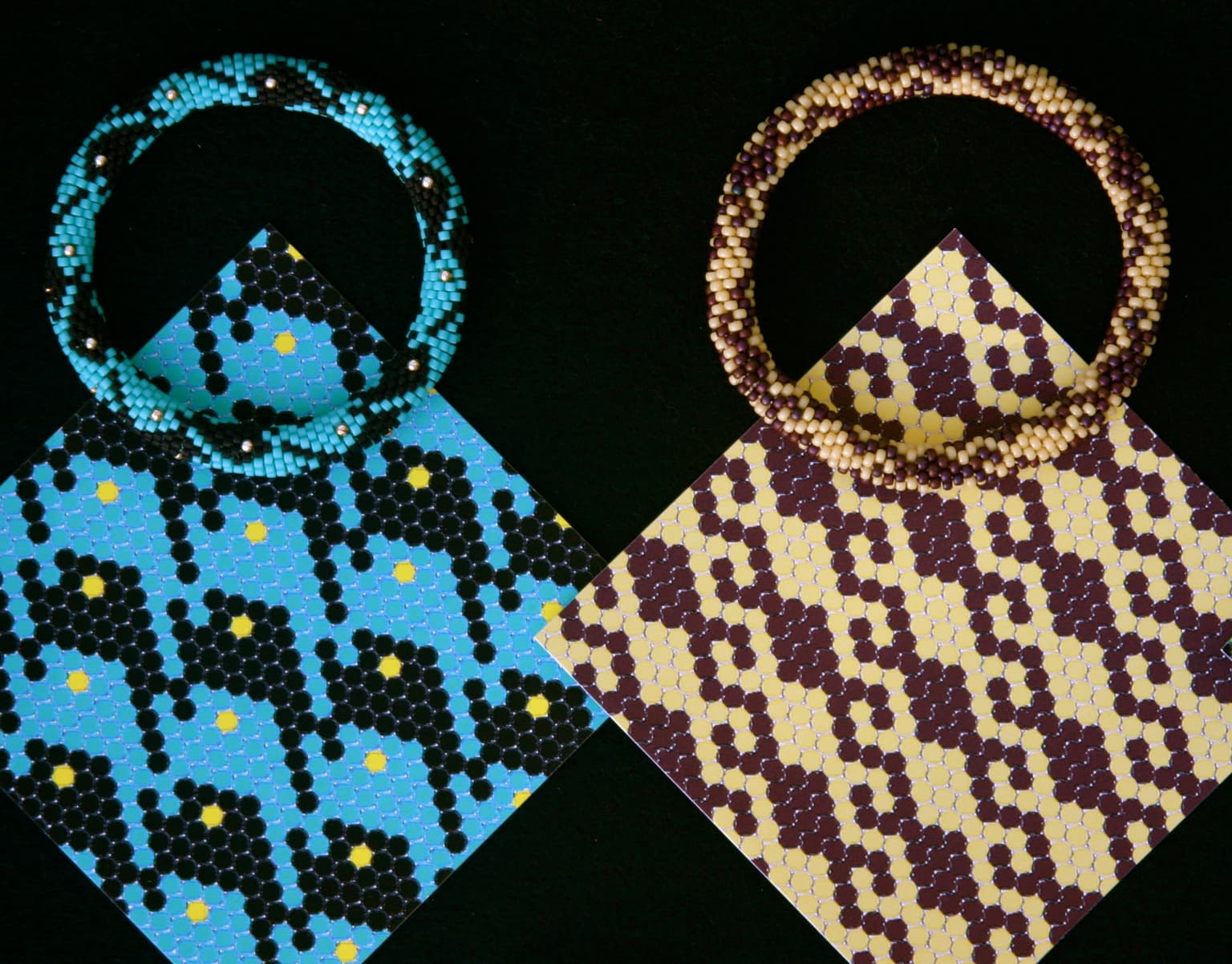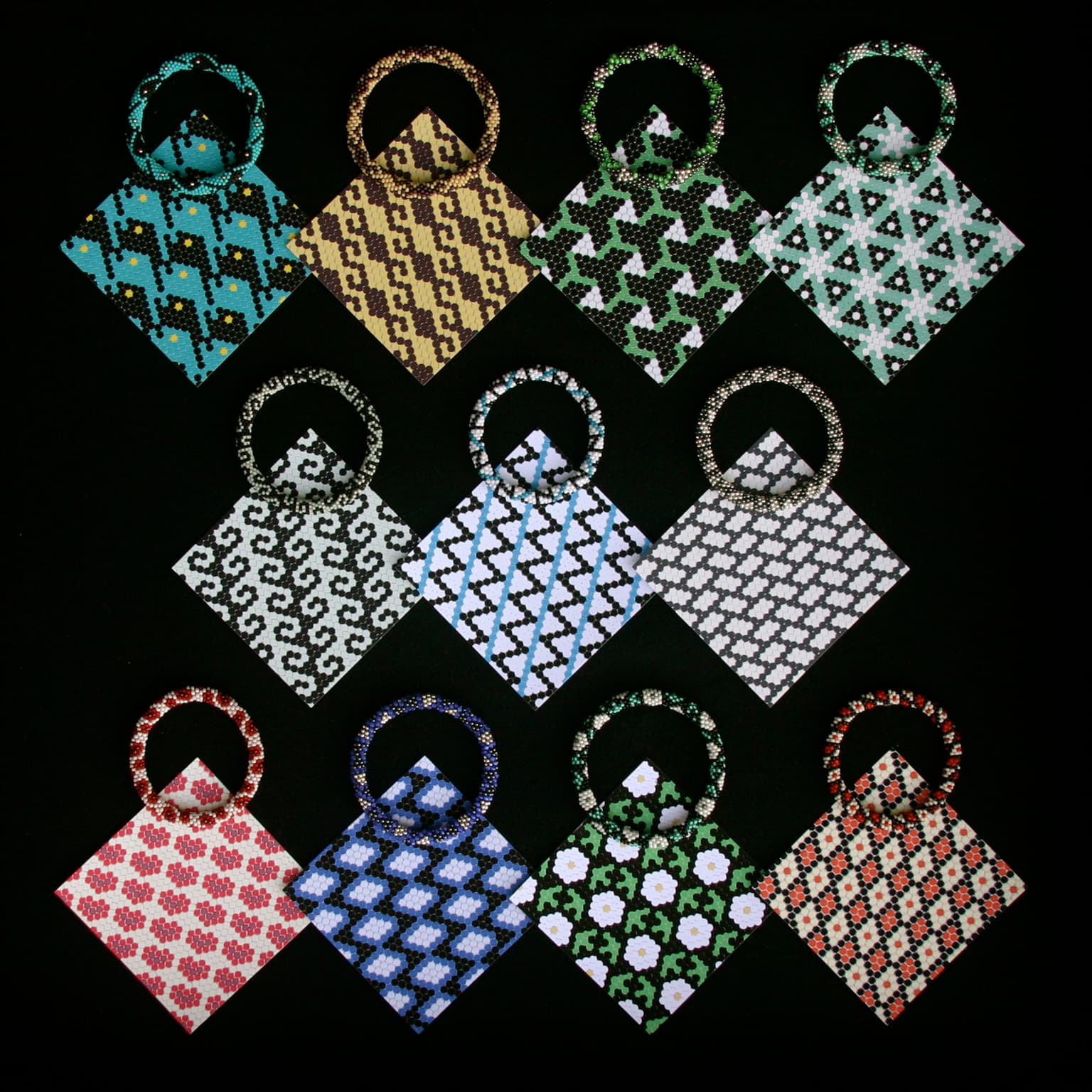2012 Joint Mathematics Meetings
Susan Goldstine and Ellie Baker
Artists
Ellie Baker
Artist and Computer Scientist
Cambridge, Massachusetts, USA
Susan Goldstine
Professor of Mathematics
St. Mary's College of Maryland
St. Mary's City, Maryland, USA
Statement
Bead crochet bracelets have an allure that is hard to resist. For the wearer, adorned by the firm but pliable packing of beads into a sleek, snake-like skin, the appeal is both visual and tactile. For the crafter, the technique is meditatively repetitive and the bead color and texture choices endless. But for the mathematically minded, the greatest allure is in creating bracelet patterns. Behind the deceptively simple and uniform arrangement of beads is a subtle geometry that produces compelling design challenges and fascinating mathematical structures. We have been collaborating over several years on bead crochet design methods and on a variety of design questions that intrigue us. This project represents one of our forays.
Artworks

close-up: P3 and P6

close-up: P1 and P2

Crystallographic Bracelet Series
20" X 20"
glass, sterling, and semi-precious stone beads, thread, inkjet prints on paper
2011